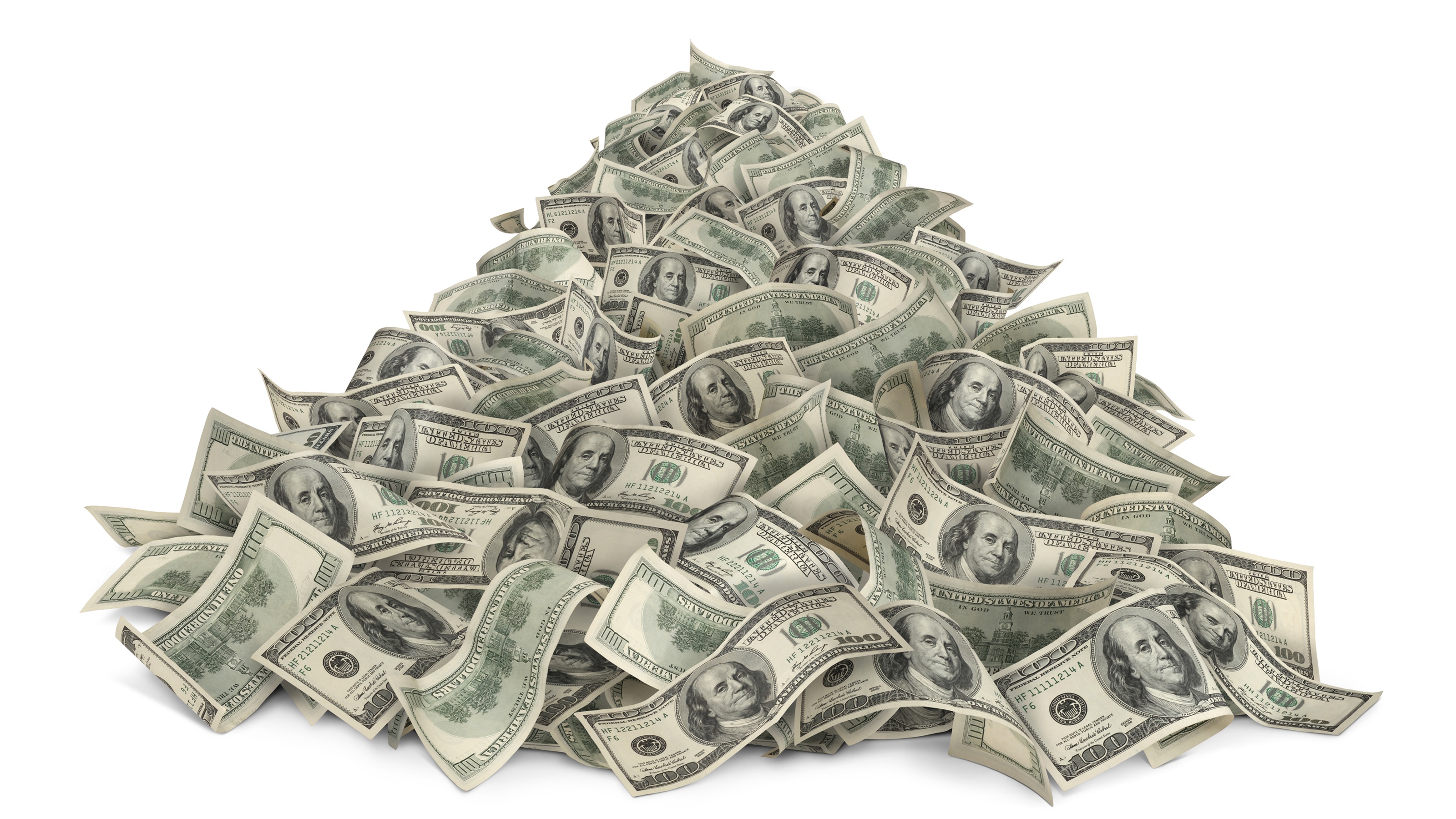How Much Cash Should Retirees Hold?
If you’re thinking about three months' worth of expenses, you might want to think again. Three years' worth might be more like it for many people.


Retirees tread a tricky line: Keep enough cash in their pockets to cover the unexpected but not so much that inflation nibbles away at their nest egg. However, in my firm’s experience, we find many retirees maintain only a fraction of the optimal level of cash.
Although many savers rely on the “three-to-six months' of expenses” rule of thumb, many fail to consider how their needs change in retirement. Research suggests most people require a significantly larger cash reserve during this stage of life, especially if they rely on their investment portfolio for a substantial portion of their income.
We understand why people can be averse to holding more cash, given the abysmally low yields on savings accounts and CDs. We also acknowledge that longtime habits are hard to break.
From just $107.88 $24.99 for Kiplinger Personal Finance
Be a smarter, better informed investor.

Sign up for Kiplinger’s Free Newsletters
Profit and prosper with the best of expert advice on investing, taxes, retirement, personal finance and more - straight to your e-mail.
Profit and prosper with the best of expert advice - straight to your e-mail.
Having said that, if you are in or approaching retirement, we strongly suggest taking another look at your cash levels. There are several benefits to maintaining a larger reserve – some of which aren’t obvious:
#1: Safety During Stock Market Downturns
Creating a reliable income stream is much harder than in past generations, when Treasury yields were higher and life spans were shorter. Prior generations were able to retire comfortably by investing in long-term government bonds and simply living off the interest.
Conditions are more difficult now. With the low rates on guaranteed investments (you’re lucky if you can get anything near 2.5% on one-year CDs these days), an investor must be willing to take on market risk in order to outpace inflation, or else his standard of living will erode. Rising life expectancies compound the challenge.
Outside of a catastrophic event (a health emergency, etc.), the greatest retirement risk is having to withdraw funds from a portfolio during severe market conditions, which happened to many people during the Great Recession. These withdrawals magnify the impact of the downturn, since more securities need to be sold at temporarily low prices in order to cover their expenses.
One way to mitigate this risk is to maintain enough cash to ride out a bear market, thereby allowing your portfolio to recover before making further withdrawals. How much? The necessary reserve will depend upon your specific asset mix. For example, a portfolio consisting entirely of intermediate-term government bonds will require less of a cushion than an all-stock portfolio. For a balanced portfolio of 60% stocks and 40% bonds, you might need to keep roughly three years’ worth of anticipated withdrawals in cash.
#2: Peace of Mind? Priceless
Some retirement worries are outside of your control, such as market or economic conditions. Where possible, however, any concerns that can be eliminated should be.
There is a tremendous amount of comfort in knowing your immediate portfolio distributions are safe. With ample reserves, it’s much easier to maintain a longer-term perspective when markets become choppy.
#3: Higher Returns, Greater Overall Wealth
This is the perhaps greatest surprise to most people, because it seems counterintuitive. However, a higher level of cash reserves can lead to greater overall returns, because it allows an investor to maintain more risk in the remaining portfolio. These higher expected returns might more than offset the idle cash, and potentially produce far greater wealth long-term.
Best Practices for Your Cash Reserves
For those withdrawing around 4% of their initial portfolio, research generally shows the optimal long-term portfolio mix to be roughly 60% to 70% stocks, with the rest in high-quality bonds. When combined with a reserve of three years' worth of anticipated withdrawals, this provides a powerful blend of liquidity and safety combined with long-term growth potential.
To mitigate the impact of low yields, we typically recommend maintaining only a portion of this cushion in money market funds or savings accounts. Remaining cash can be allocated into CDs, short-term high-grade bonds, or other slightly less liquid assets that can potentially outperform money market rates. Short-term U.S. Treasury ETFs are a good example, while those in a higher tax bracket may prefer low duration municipal bond funds that maintain a high credit quality.
One cautionary note: Don’t fall victim to the temptation to “reach for yield” in this sleeve of your portfolio. As investors learned in the Great Recession, the risk entailed with even a slight increase in yield can be significant. It’s not worth risking the sustainability of your portfolio in order to potentially earn a little bit more on your cash. This is where you play it safe.
Conclusion
Maintaining optimal cash levels is a key part of an integrated retirement plan. If you haven’t reviewed your cash allocations recently, the recent return of market volatility might be a compelling reason to take another look.
Profit and prosper with the best of Kiplinger's advice on investing, taxes, retirement, personal finance and much more. Delivered daily. Enter your email in the box and click Sign Me Up.

Michael Yoder, CFP®, CRPS®, writes about issues affecting retirees and those transitioning into retirement. He is Principal at Yoder Wealth Management (www.yoderwm.com), a Registered Investment Advisor. 2033 N. Main St., Suite 1060, Walnut Creek, CA 94596. 925-691-5600.
-
 I'm a Financial Planner: Here's How to Invest Like the Wealthy, Even if You Don't Have Millions
I'm a Financial Planner: Here's How to Invest Like the Wealthy, Even if You Don't Have MillionsPrivate market investments, once exclusive to the ultra-wealthy and institutions, have become more accessible to individual investors, thanks to regulatory changes and new investment structures.
-
 Four Ways a Massive Emergency Fund Can Hurt You More Than It Helps
Four Ways a Massive Emergency Fund Can Hurt You More Than It HelpsSaving too much could mean you're missing opportunities to put your money to work. Redirect some of that money toward paying off debt, building retirement funds, fulfilling a dream or investing in higher-growth options.
-
 I'm a Financial Planner: How to Dodge a Retirement Danger You May Not Have Heard About
I'm a Financial Planner: How to Dodge a Retirement Danger You May Not Have Heard AboutTiming is everything, and sequence of returns risk can mean the difference between a retirement nest egg that's overflowing … or empty.
-
 Caring for Aging Parents: An Expert Guide to Easing the Financial and Emotional Strain
Caring for Aging Parents: An Expert Guide to Easing the Financial and Emotional StrainEarly conversations, financial planning and understanding the progression of care needs can help to mitigate stress and protect family relationships.
-
 I'm a Financial Adviser: The OBBB Is a Reminder for Older People to Have a Long-Term Plan
I'm a Financial Adviser: The OBBB Is a Reminder for Older People to Have a Long-Term PlanThe new tax bill presents a good opportunity for retirees to revisit tax plans, look into doing some Roth conversions and consider plans for long-term care.
-
 I'm an Insurance Expert: This Is Exactly Why Your Insurance Rates Are Soaring (and What You Can Do)
I'm an Insurance Expert: This Is Exactly Why Your Insurance Rates Are Soaring (and What You Can Do)A dramatic rise in the frequency and cost of severe weather and wildfires means you need to prepare, prepare, prepare — no matter where you live — for higher premiums.
-
 Q3 2025 Post-Mortem From an Investment Adviser: Markets Continue to Climb, Gold Shines
Q3 2025 Post-Mortem From an Investment Adviser: Markets Continue to Climb, Gold ShinesThe third quarter saw market gains driven by Fed rate cuts and strong earnings, despite high valuations and concerns about speculative trading and job growth. Gold and international stocks could be potential hedges.
-
 Moving Abroad? You Might Need a Cross-Border Financial Adviser
Moving Abroad? You Might Need a Cross-Border Financial AdviserIf you want to live in another country long term, you could benefit from an expert's guidance. Here's how to find a good qualified adviser to help with residency requirements, documentation, financial laws and tax impacts.

